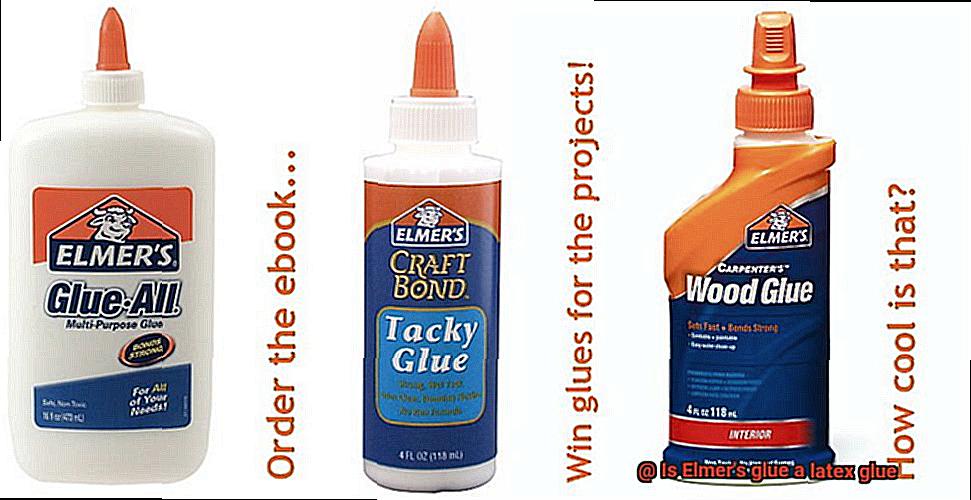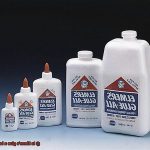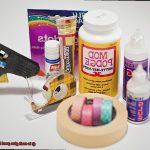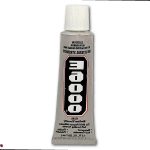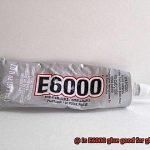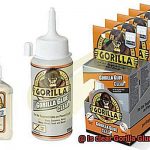The faithful sidekick in our crafting escapades, school projects, and everyday fixes. But let’s get real for a moment – have you ever wondered what this adhesive wizard is actually made of? Specifically, is Elmer’s glue a latex glue? Today, we’re diving headfirst into the world of Elmer’s glue to uncover the truth behind this burning question.
This laid-back yet enlightening exploration will reveal the secrets that make Elmer’s glue an absolute must-have in every home. Get ready as we dissect its sticking power, drying speed, versatility, and most importantly, the ingredient that determines whether it belongs to the latex glue clan or not.
So hold on tight, fellow crafters, DIY enthusiasts, and curious minds alike. We’re about to embark on an adventure through the captivating realm of Elmer’s glue and its magical formula. Brace yourselves as we separate fact from fiction and unveil what truly makes Elmer’s glue an essential tool in our creative arsenal.
What is Latex Glue?
Contents
- 1 What is Latex Glue?
- 2 What are the Ingredients in Elmer’s Glue?
- 3 Similarities Between Latex and Elmer’s Glue
- 4 Differences Between Latex and Elmer’s Glue
- 5 Uses of Elmer’s Glue
- 6 Advantages of Using Elmer’s Glue
- 7 Disadvantages of Using Elmer’s Glue
- 8 Safety Considerations When Using Elmer’s Glue
- 9 Conclusion
Latex glue, also known as rubber cement, is a versatile adhesive that is commonly used in various applications. Here are some key points to know about latex glue:
- Composition: Latex glue is made from a water-based emulsion of synthetic rubber. This composition gives it its unique characteristics and adhesive properties.
- Bonding capabilities: Latex glue can bond different types of materials together, including paper, fabric, leather, wood, and some plastics. It is a preferred choice for crafting projects due to its versatility.
- Appearance and drying time: When wet, latex glue has a milky white appearance. However, it dries to a clear finish. The drying time can vary depending on the thickness of the application and the humidity level.
- Repositionable nature: Latex glue allows for adjustments and repositioning of bonded materials before it fully sets. This feature is useful for tasks that require precise alignment or temporary attachments.
- Flexibility: Latex glue offers a strong bond while maintaining flexibility. This characteristic allows bonded materials to move or bend without causing the adhesive to crack or break.
- Resistance to heat and moisture: Once fully dried, latex glue provides good resistance to heat and moisture. It forms a water-resistant bond that can withstand mild exposure to water or moisture.
- Variations: Not all latex glues are the same. Different manufacturers may have their own formulations and variations, resulting in slight differences in performance and characteristics. Always check the specific product label and instructions for optimal results.
What are the Ingredients in Elmer’s Glue?
Elmer’s glue, the beloved adhesive of artists, crafters, and students alike, is a true powerhouse when it comes to bonding. At its core, Elmer’s glue relies on polyvinyl acetate (PVA), a synthetic polymer that acts as the main ingredient. This water-based adhesive is renowned for its ability to create a strong bond once it dries.
To enhance its performance and extend its shelf life, Elmer’s glue also incorporates various additives and preservatives. These include plasticizers, thickeners, and wetting agents that work in harmony to optimize the glue’s properties.
Plasticizers play a crucial role by enhancing the flexibility of the dried glue. This ensures that your creations remain intact without becoming brittle over time. Thickeners are also added to give the glue a more viscous consistency, making it easy to apply and spread on different surfaces. And let’s not forget the wetting agents, which reduce surface tension and boost the adhesive properties of the glue, ensuring a strong and reliable bond.
However, it’s worth noting that not all Elmer’s glue products contain latex. While some variants may include latex as an ingredient, there are also latex-free options available for those with sensitivities or allergies. Latex, derived from rubber tree sap, is renowned for its exceptional bonding strength but can trigger allergic reactions in certain individuals.
To determine whether a specific variant of Elmer’s glue contains latex or any other allergenic substances, it is best to consult the product label or reach out to the manufacturer directly. The label will provide comprehensive information about the ingredients used in that particular product, ensuring you make an informed decision.
Similarities Between Latex and Elmer’s Glue
Latex and Elmer’s glue share a multitude of similarities that make them go-to choices for a wide range of adhesive applications. First and foremost, both glues are water-based adhesives, predominantly composed of water and a polymer substance. While latex glue derives from natural latex obtained from rubber tree sap, Elmer’s glue is formulated with polyvinyl acetate (PVA) as its primary ingredient.
When it comes to application properties, latex and Elmer’s glue exhibit remarkable similarities. They are effortlessly applied, can be spread evenly, and deliver a robust bond once dried. Moreover, they dry into a crystal-clear, transparent finish, making them ideal for projects that prioritize aesthetics. Their versatility is another shared trait, as both glues adhere well to various surfaces such as paper, fabric, wood, and select plastics.
Safety is also a common attribute between latex and Elmer’s glue. Both are non-toxic and pose no significant health risks or emit harmful fumes, rendering them suitable for children’s projects. Additionally, these glues can be diluted with water to adjust their viscosity or tailor them to specific tasks, providing users with greater control over their adhesive properties.
In terms of bond strength, both latex and Elmer’s glue exhibit excellent adhesive qualities. It should be noted, however, that the specific formulation of each glue type may impact the ultimate strength of the bond.
Lastly, both glues offer the convenience of easy cleanup with water before drying. This feature allows for effortless rectification of mistakes or accidental spills.
Differences Between Latex and Elmer’s Glue
When it comes to adhesive superheroes, latex glue and Elmer’s glue are at the top of their game. These water-based glues have similar characteristics, but they also have some key differences that make them unique. In this article, we will explore the differences between latex glue and Elmer’s glue, providing you with the knowledge you need to choose the right glue for your next project.
Composition:
Latex glue, also known as rubber cement, is made from a natural polymer called latex, derived from the sap of rubber trees. It has a milky white appearance and a liquid consistency. On the other hand, Elmer’s glue is a brand name for a type of PVA (polyvinyl acetate) glue. PVA glue is a synthetic polymer that undergoes chemical processes to form a strong adhesive. Elmer’s glue is available in different varieties, including white glue (original), school glue (washable), and wood glue (for woodworking projects).
Drying Time:
One major difference between latex and Elmer’s glue is their drying time. Latex glue tends to dry more slowly, allowing for repositioning and adjustments before it sets. This makes it ideal for projects that require precise placement or multiple adjustments. On the contrary, Elmer’s glue, especially the original white glue, dries relatively quickly, forming a strong bond within minutes. This makes it perfect for quick fixes or projects where time is of the essence.
Tackiness:
Another difference between latex and Elmer’s glue is their tackiness or stickiness. Latex glue has a higher initial tack compared to Elmer’s glue. This means that latex glue can adhere to surfaces more quickly and securely upon application. Whether you’re working on delicate paper crafts or intricate model building, latex glue’s initial stickiness provides a reliable hold from the start. However, Elmer’s glue, although it may take slightly longer to develop its initial tackiness, offers better long-term adhesion and durability compared to latex glue. Once fully dried and cured, Elmer’s glue forms a strong bond that holds up well over time.
Versatility:
Elmer’s glue is often considered more versatile than latex glue. It can be used on a wide range of materials, including paper, wood, fabric, leather, and even some plastics. Whether you’re crafting scrapbooks or repairing furniture, Elmer’s glue is the go-to adhesive for various projects. On the other hand, latex glue, though effective on certain materials like paper and cardboard, may not be as suitable for bonding other surfaces. It is commonly used in specialized industries or for specific applications.
Washability:
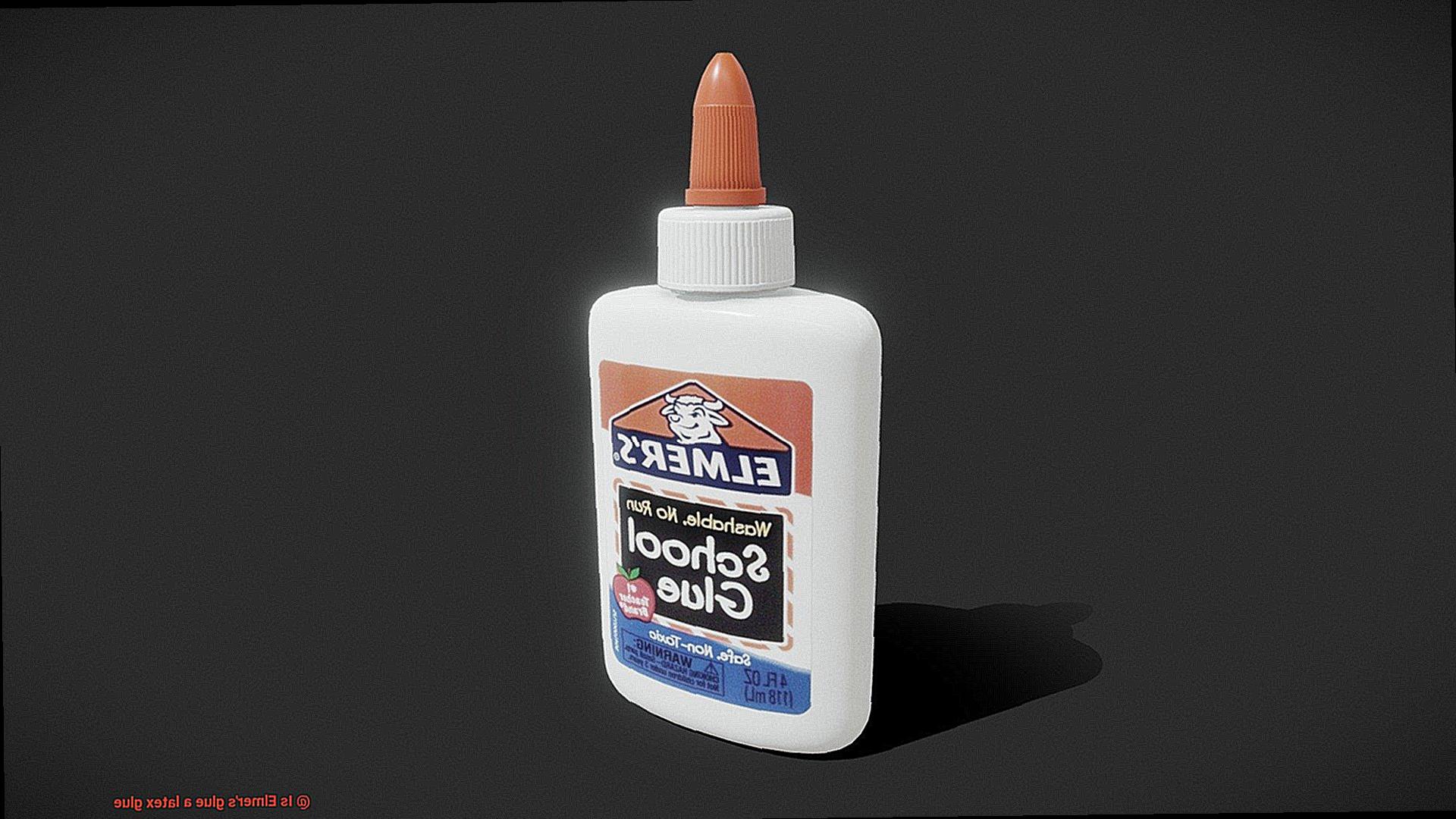
Elmer’s school glue is specifically designed to be washable, making it ideal for children’s crafts. It easily washes away with water before it dries, allowing for easy cleanup. However, latex glue may not be as easily washable and may leave behind residue or stain certain fabrics. If you’re working on projects that require easy cleanup or involve children, Elmer’s school glue is the better choice.
Safety:
Both latex and Elmer’s glue are generally considered non-toxic when used as directed. However, it’s always important to read the product labels and take necessary precautions, especially when using adhesives around children or pets.
Cost:
Lastly, cost may also be a factor to consider. Latex glue is often more expensive than Elmer’s glue, mainly due to its natural composition and specialized uses in certain industries. If you’re on a budget or working on a project that doesn’t require specific properties of latex glue, Elmer’s glue offers a cost-effective solution without compromising on quality.
Uses of Elmer’s Glue
Elmer’s glue is not just your ordinary adhesive; it is a versatile superhero that can tackle a wide range of tasks. Whether you’re diving into an arts and crafts project, fixing household items, or even exploring the world of beauty, Elmer’s glue has got you covered. Let’s take a closer look at its many uses:
- Arts and Crafts: Elmer’s glue is a go-to adhesive for all your creative endeavors. It effortlessly bonds lightweight materials like paper, cardboard, and fabric. With its clear-drying formula, you can confidently showcase your projects without any unsightly residue. From collages to scrapbooking and handmade cards, Elmer’s glue is your trusted companion.
- School Projects: Step into any classroom, and you’ll find Elmer’s glue in full action. It is a staple for poster-making and constructing dioramas. Its non-toxic formula ensures the safety of young minds as they unleash their creativity.
- Woodworking: When it comes to woodworking projects, Elmer’s glue proves to be an indispensable tool. It securely bonds wooden pieces before they are secured with nails or screws. This adhesive adds strength and stability to joints, ensuring long-lasting results that stand the test of time.
- Household Repairs: Have a broken ceramic, glass, or plastic item? Fear not, as Elmer’s glue comes to the rescue. It skillfully repairs various household items and seals small cracks or gaps in walls and furniture. Say goodbye to the inconvenience of broken objects.
- Protective Coating: Elmer’s glue not only excels in adhesion but also doubles as a protective coating for surfaces like paper or cardboard. Applying thin layers creates a glossy finish that adds a touch of professionalism to your projects.
- Beauty Product: Brace yourself for this unconventional use—Elmer’s glue can even be a beauty product. It serves as a temporary adhesive for false eyelashes, ensuring they stay in place all day. Additionally, it can act as a base for homemade face masks, offering a budget-friendly alternative to expensive beauty products. Just remember to apply responsibly and keep it away from your eyes.
Advantages of Using Elmer’s Glue
Its wide availability, affordability, non-toxic nature, water-solubility, clear drying, strong bonding properties, tailored formulations, and ease of use make it a top choice for various projects.
Firstly, Elmer’s Glue can be easily found in most stores that sell office or school supplies, ensuring accessibility for anyone who needs it. No need to search high and low or wait for an online delivery. Additionally, compared to other adhesives on the market, Elmer’s Glue is very affordable. It is a cost-effective option for those on a budget or for large-scale projects that require a significant amount of adhesive.
Furthermore, Elmer’s Glue is safe to use, even for children. It does not contain harmful chemicals, making it an ideal choice for school projects or crafts involving kids. Parents can have peace of mind knowing their children are using a safe product.
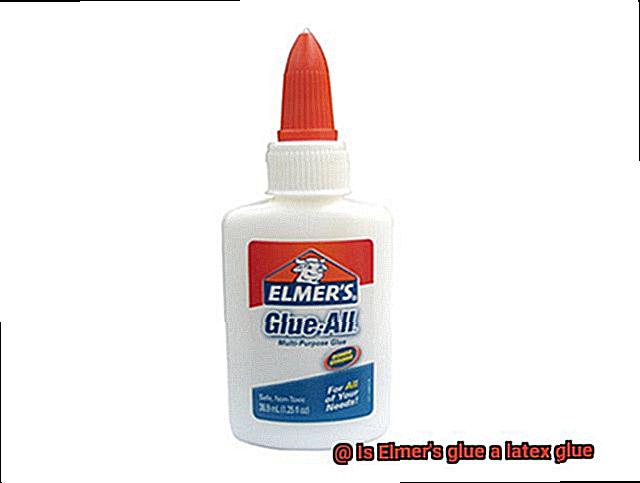
Moreover, Elmer’s Glue is water-soluble, allowing for easy clean-up with water if spills or excess glue occur during application. This convenience minimizes the risk of permanent stains or damage. Additionally, Elmer’s Glue dries clear, enhancing the aesthetics of projects by eliminating visible adhesive lines or residue.
In terms of bonding properties, Elmer’s Glue is known for its strength and versatility. It can effectively bond various materials such as paper, cardboard, fabric, wood, and some plastics. This makes it suitable for a wide range of applications.
Furthermore, Elmer’s Glue offers different formulations tailored to specific needs. For example, their craft bond formula provides extra strength and durability for more demanding projects.
Lastly, Elmer’s Glue is easy to use with its squeeze bottle or stick packaging. Precise application can be achieved without the need for additional tools or equipment. This convenience makes it suitable for both beginners and experienced users.
Disadvantages of Using Elmer’s Glue
When it comes to adhesives, Elmer’s glue is a popular choice for many projects. It is versatile, easy to use, and readily available. However, like any product, Elmer’s glue also has its limitations and disadvantages. Let’s take a closer look at some of these drawbacks:
Firstly, Elmer’s glue is not as strong as some other types of adhesives, such as epoxy or super glue. This means that it may not be suitable for certain projects that require a strong bond, such as repairing heavy objects or bonding materials with high tension or pressure.
Additionally, Elmer’s glue has a relatively long drying time compared to other adhesives. This can be inconvenient for projects that require quick turnaround times or for individuals who are impatient and want immediate results.
Furthermore, Elmer’s glue is water-based, which means that it is not waterproof. This can be a disadvantage when using it for outdoor projects or in environments where there is a high risk of exposure to moisture. In such cases, the glue may become weak or lose its adhesive properties when exposed to water.
Moreover, Elmer’s glue can sometimes leave visible residue on surfaces, especially when used in large quantities or when applied unevenly. This can be a problem for projects where aesthetics are important, such as arts and crafts or DIY home improvement projects.
Additionally, Elmer’s glue may not be suitable for bonding certain types of materials, such as metal or plastic. It is primarily designed for use on porous surfaces like paper, fabric, and wood. Trying to use Elmer’s glue on non-porous materials may result in a weak bond or failure of the adhesive altogether.
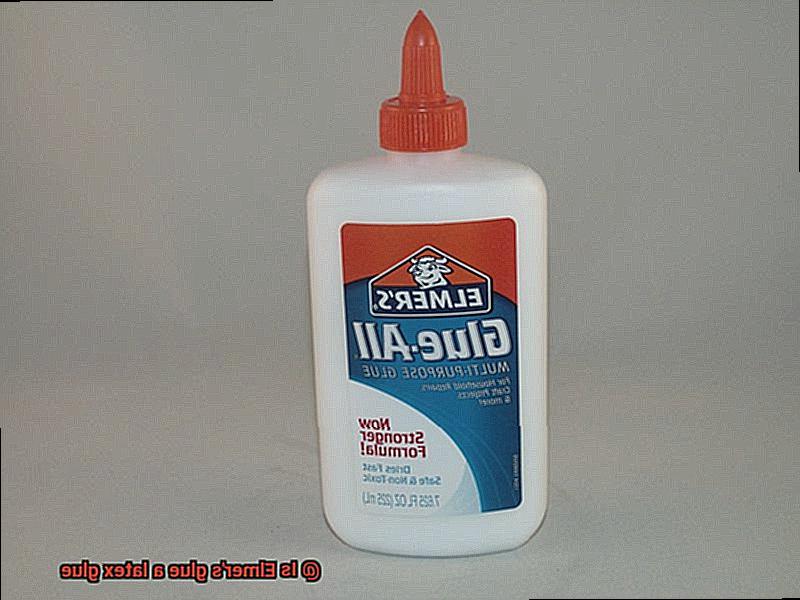
Furthermore, Elmer’s glue may have a limited shelf life compared to other adhesives. Over time, the glue may thicken or become less effective if not properly stored or used within a certain timeframe. This can lead to wasted product and the need for frequent replacement.
Moreover, Elmer’s glue is not heat resistant, which means that it may fail or lose its adhesive properties when exposed to high temperatures. This can be problematic for projects that involve heat application, such as hot gluing or bonding objects near heat sources.
Additionally, Elmer’s glue may not be suitable for certain specialized applications or industries that require specific adhesive properties, such as the medical or aerospace industries. These industries often require adhesives with specific certifications, properties, or performance standards that may not be met by Elmer’s glue.
Lastly, Elmer’s glue is not a permanent adhesive and can be easily removed or undone with water. While this can be an advantage for temporary projects or for individuals who need to make adjustments or corrections, it can also be a disadvantage when a long-lasting bond is required.
Safety Considerations When Using Elmer’s Glue
Elmer’s glue is a popular adhesive that is commonly used for a variety of projects, from arts and crafts to DIY repairs. While it is generally considered safe for use, there are some safety considerations that should be taken into account to ensure a safe and enjoyable experience.
Firstly, it is important to keep Elmer’s glue out of reach of children. Although the glue is non-toxic, ingesting a large amount can be harmful. Therefore, it is crucial to supervise children while they are using the glue and ensure that they do not put it in their mouths.
Additionally, it is essential to avoid contact with the eyes. Elmer’s glue is not designed for use in the eyes and can cause irritation if it comes into contact with them. If accidental eye contact occurs, it is recommended to flush the eyes with water for several minutes and seek medical attention if irritation persists.
Using Elmer’s glue in a well-ventilated area is also important. The glue emits a small amount of fumes that can be irritating to some individuals, especially those with respiratory sensitivities. To minimize any potential discomfort, it is advisable to use the glue in a well-ventilated room or open windows and use a fan to help dissipate the fumes.
Protecting clothing and surfaces from accidental spills or drips is another important safety consideration when using Elmer’s glue. The glue can leave stains on fabrics and may damage certain surfaces if left untreated. To prevent any unwanted messes, it is recommended to use newspapers or protective coverings when working with the glue.
Furthermore, Elmer’s glue should not be used on open wounds or cuts. While the glue may form a temporary seal, it is not designed for medical use and can cause further complications or delay proper wound healing. It is always best to consult a healthcare professional for appropriate wound care.
Proper storage of Elmer’s glue is also crucial to maintain its effectiveness. It is important to keep the lid tightly closed to prevent drying out, as dried-out glue is less effective and harder to work with. Storing the glue in a cool and dry place will help prolong its shelf life.
fhm3Xfx_HTw” >
Conclusion
Elmer’s glue is indeed a latex glue.
Its formulation includes natural rubber latex, making it an effective adhesive for various materials. With its strong bonding properties, Elmer’s glue is commonly used in crafts, woodworking, and other DIY projects.
Whether you’re sticking paper, fabric, or even wood together, Elmer’s glue provides a reliable hold that withstands the test of time.

